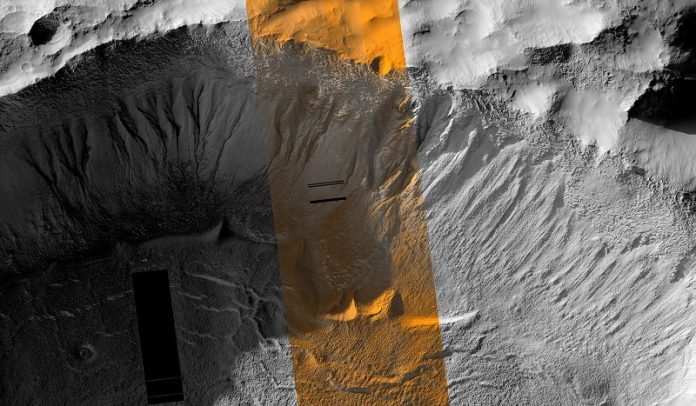
A group of scientists from Brown University have recently uncovered new details about Mars.
Their study, published in the journal Science, looks at the strange gullies on the Red Planet.
These gullies resemble ones found in Antarctica’s Dry Valleys on Earth, which are created by water from melting glaciers.
The researchers developed a model to predict when Mars might get warm enough for ice on and beneath its surface to melt into liquid water.
The team discovered that when Mars leans on its axis to a certain degree, the atmosphere can become dense enough to allow brief moments of melting at the places where gullies are located.
They matched this data with periods in Mars’ history when the gullies in a region called Terra Sirenum are believed to have grown quickly. These changes could not have happened without some presence of water.
Jim Head, a geological scientist at Brown, explained that billions of years ago, Mars had running water, but this disappeared and Mars became extremely dry.
However, when Mars tilts on its axis, it can warm up enough to melt snow and ice, returning liquid water until temperatures fall and it freezes again.
This study helps us understand more about how these gullies formed, including their start, the amount of erosion, and their extent down the craters.
It was previously thought that gullies were shaped by carbon dioxide frost, which could cause rocks to slide down slopes.
The size of the gullies made some scientists believe that meltwater from glaciers must have been involved. But proving this has been tricky, as Mars is usually about 70° below freezing.
The new study suggests gully formation was driven by melting ice and also by CO2 frost evaporation. This pattern could have repeated over the past several million years, with the most recent event happening about 630,000 years ago.
The team believes that if there was ice at the gully locations when Mars tilted, the conditions would have been right for the ice to melt as temperatures rose above freezing.
This leads them to suggest that water erosion explains the global distribution of gullies on Mars better than the previous CO2 theory.
Despite doubts about the possibility of meltwater, the scientists were convinced of their theory because they saw similar features in Antarctica. Even with freezing temperatures, the sun can heat ice just enough for it to melt and create gullies.
This discovery brings back the question: Could life exist on Mars? After all, liquid water is necessary for life as we know it. Mars will eventually tilt again, the researchers said.
Jim Head asks, “Could there be a connection between the early wet Mars and the Mars we see today in terms of liquid water?”
He suggested that any Martian microbes might find a comfortable existence in ice and water. For example, in the harsh Antarctic environment, organisms often wait in stasis for water.
This study also suggests that these gullies could be important sites to visit in future Mars missions. Follow us on Twitter for more articles about this topic.



